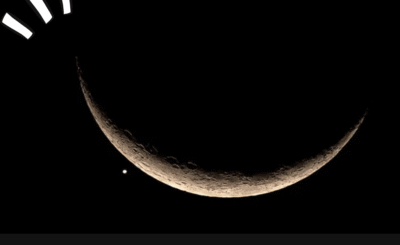Each year, as July arrives, something captivating unfolds in the night sky. The full moon rises—bright, golden, and unusually large. To many, it seems as though the moon is closer to Earth than usual, almost within reach. This striking visual experience is known as the Full Moon Illusion, and July’s full moon is one of the best times to witness it.
Whether you’re a casual skywatcher or a seasoned stargazer, the sight of the July full moon hanging low on the horizon can be mesmerizing. But what causes this illusion? And why does it feel so dramatic during this particular month?
Let’s explore the fascinating science and symbolism behind this optical wonder.
What Is the Full Moon Illusion?
The Full Moon Illusion refers to a psychological phenomenon where the moon appears much larger when it’s near the horizon than when it’s high overhead. This illusion isn’t caused by the moon actually changing size or distance, but rather by the way our brains interpret what we see.
When the moon is low in the sky, we view it in comparison to familiar objects like trees, buildings, or hills. Our minds automatically adjust our perception, making the moon seem much larger than when it is seen against the vast, empty expanse of the overhead sky. Even though the size of the moon remains constant, our brain tells us otherwise.
Why July’s Full Moon Stands Out
The full moon in July is often referred to as the Buck Moon, named after the time of year when male deer begin to grow new antlers. It typically occurs during warm, clear summer nights, making it easier to view and enjoy. The moon often appears reddish or golden during its rise due to the thicker atmosphere near the horizon, further adding to its dramatic look.
In some years, the July full moon may also coincide with what’s known as a supermoon, when the moon is at or near its closest point to Earth in its orbit (called perigee). This combination of timing, atmosphere, and orbital position can make the illusion even more intense.
However, even without a supermoon, the illusion can still make the July full moon seem especially grand and close. It’s all about how our eyes and brain interact with the world around us.
The Science Behind the Illusion
The Full Moon Illusion has puzzled scientists and philosophers for centuries. Here are some of the main factors believed to contribute to the effect:
-
Relative Size Comparison: When the moon is near the horizon, it is viewed alongside trees, rooftops, and mountains. These objects provide a point of reference, tricking the brain into perceiving the moon as larger than it truly is.
-
Atmospheric Effects: The Earth’s atmosphere near the horizon acts like a lens, slightly distorting the light from the moon. While this distortion doesn’t actually magnify the moon, it can give it a warmer color and add to the perception of size.
-
Optical Illusions in the Sky: When the moon is high in the sky, it appears smaller because there’s nothing nearby to compare it to. This makes the same object—unchanged in size—seem smaller overhead than it does on the horizon.
Cultural Significance of the July Full Moon
Beyond its visual impact, the July full moon holds meaning in various cultures. In North America, Native American tribes called it the Buck Moon because of the deer’s antler growth season. In agricultural traditions, it was also known as the Hay Moon or Thunder Moon, tied to summer harvests and storm patterns.
In Hindu tradition, the July full moon often coincides with Guru Purnima, a day of honoring spiritual teachers and mentors. In many spiritual practices, full moons are considered a time of heightened energy, reflection, and ritual.
How to Best Experience the July Full Moon Illusion
If you want to witness this phenomenon in its most powerful form, timing and location are key. Here’s how to make the most of it:
-
Watch at Moonrise or Moonset: The illusion is most prominent when the moon is near the horizon, either just after it rises or just before it sets.
-
Find a Clear Horizon: Look for an open view with trees, buildings, or hills to create visual context and enhance the illusion.
-
Observe with the Naked Eye: Binoculars and telescopes are great, but the illusion is best appreciated without magnification. Use your own vision to experience the psychological effect.
-
Capture the Moment: While the illusion is psychological, it still makes for stunning photos. Use a zoom lens for dramatic shots that showcase the moon’s apparent size against the landscape.
Final Thoughts
The July Full Moon Illusion reminds us of the power of perspective. Though the moon hasn’t changed in size or shape, our minds perceive it differently depending on when and how we view it. In a way, this illusion connects science, psychology, and beauty all in one unforgettable moment.
Whether you’re out for an evening walk or setting up a camera for that perfect lunar shot, take a few minutes this July to look up. Let yourself be amazed by a phenomenon that’s part illusion, part nature, and entirely magical.







